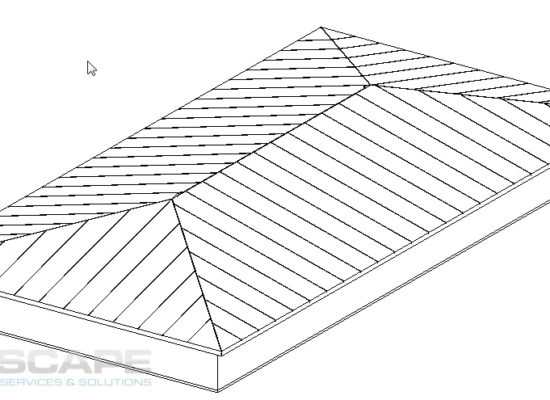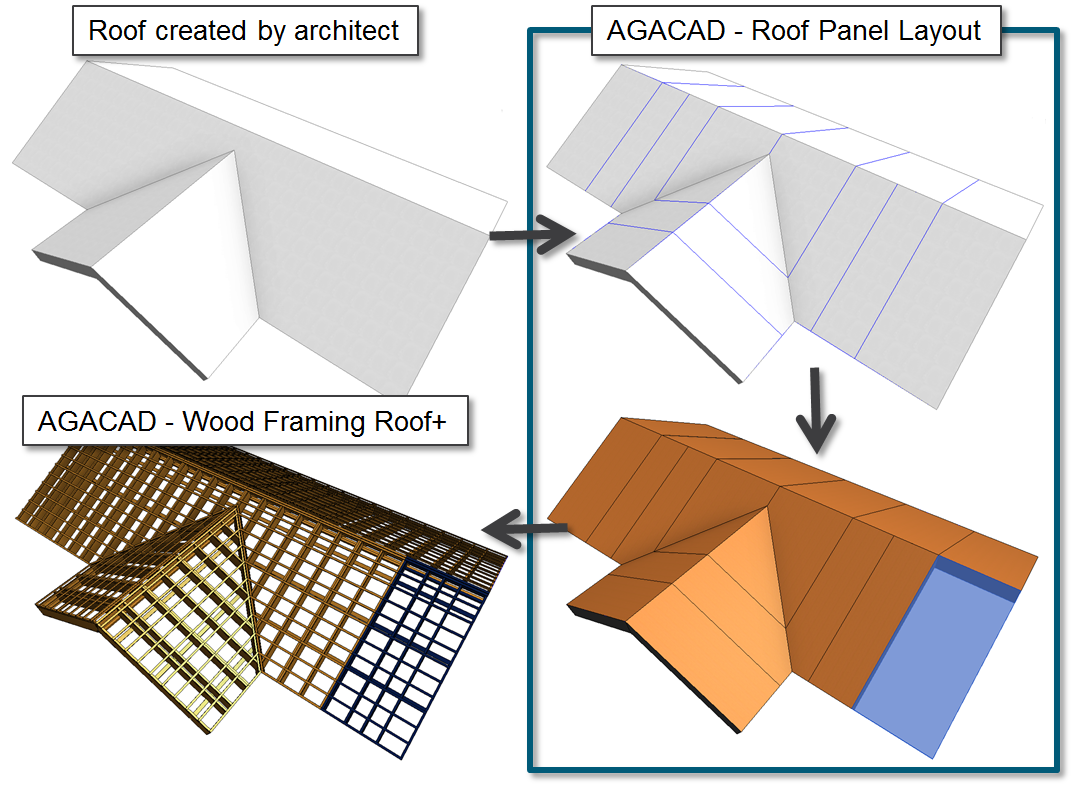

Essentially, there are three main ways to shingle a roof valley: woven, closed-cut and open. For those of you who work with prefabricated roof framing and rafter structures, the newly released version of Wood Framing Roof+ has some new features that will be especially helpful for you. Your choice of valley installation method is critical because, when improperly installed, valleys are risks for serious leaks. Water collects in a valley to flow off the roof. 2020 What is roof Valley?Ī roof valley is formed where two roof slopes meet. The soffit is underneath the overhang, between the roof’s edge and side of your home-the bottom of the triangle, if you will.3 avr. When rain or snow hits your roof, it runs down, and the overhang allows the water to flow away from your house.

The soffit is part of the overhang where your roof meets your siding. The wallplate is then used to secure the rafter to. Adjust the overhang, roof pitch, rafter width, & max spacing. Insert Generic Model object on work plane. The wallplate is secured to the internal wall, separated by DPC. 2-Pick family for quickly modeling exposed rafter tails.

The cavity is closed with a proprietary cavity closer.
#Rafter revit family download
The eaves detail shows where the roof members, and coverings, meet the wall of the dwelling. Download this Revit file of Wooden rafter Canopy for your design Wooden rafter Canopy revit family -CAD blocks free The store will not work correctly in the case when cookies are disabled. 2020 What is roof eaves detail?Įaves Detail.

The gable roof overhang reduces the amount of rain that hits the exterior of the home, thus providing additional protection from water damage.26 sept. Gable roof overhangs provide shading and protection from the elements and can also be considered desirable aesthetically. Attach two-by-fours, one for each rafter tail, perpendicular to the fascia, nailing one end to the rafter tail and the other end to the nailer.
#Rafter revit family install
How do you install soffits on an existing roof?Īdding Fascia and Soffits To build a soffit, attach a two-by-four nailer board to the wall of the building, making it level with the bottom of the fascia. Roof overhangs can extend farther than 2 feet, but beyond this length, they begin to lose structural integrity and require external support. This will protect a roof from most types of damage. Two feet is the general maximum length for a typical roof overhang. Most homes have an overhang, however, length varies greatly depending on the architectural style of the roof, with slate roofs having longer overhangs typically.18 oct. Under the overhang is a structure known as the soffit. 1040, 1040 R radial arrays, 7475 Rafter Cut, 595 Rafter or Truss. The roof overhang refers to how much the edge of the roof goes beyond the house siding. 9698 defined, 96 proportional control, simple mass family, 326, 326327. Sketch, or pick, a closed loop for the roof.ĥ. On the Draw panel, select a sketch or pick tool.Ĥ. Click Architecture tab Build panel Roof drop-down (Roof by Footprint).ģ. Display a floor plan view or a reflected ceiling plan view.Ģ. How do you make a roof footprint in Revit?ġ. To raise or lower the roof from the reference level, specify a value for Offset. In the Roof Reference Level and Offset dialog, select a value for Level.ĥ. Click Architecture tab Build panel Roof drop-down (Roof by Extrusion).Ĥ. If your Fascia Depth is selected to be same (or more) than your roof assembly depth, then you’ll get a perfect square.2. There are some great features here to use, you can define the Cutoff Level and Cutoff Offset and Base Offset from Level to create Rafter tails:ī) Two Cut – Plumb: This will allow you to also define Fascia DepthĬ) Two Cut – Square: also gives you Fascia Depth option (Note that some of these are NOT available if you use a different method to build your roof):ġ- Rafter or Truss: Revit will allow you to pick if the assembly you are modeling is going to be a rafter or truss and based on that, it will be placed accordingly:Īnd Rafter sits at the interior edge of the stud (Wall Core) These are some of the options you will have when you draw roofs by FOOTPRINT and use PICK WALL option. I also live in the PNW and see a lot of exposed timber framing. Here are some quick tips on roofs and rafter tails you might find useful… I work in residential and am currently in Revit LT everyday, about 6-8 months experience, mostly self taught, some Lynda Aubin videos and just finished my first official course.


 0 kommentar(er)
0 kommentar(er)
